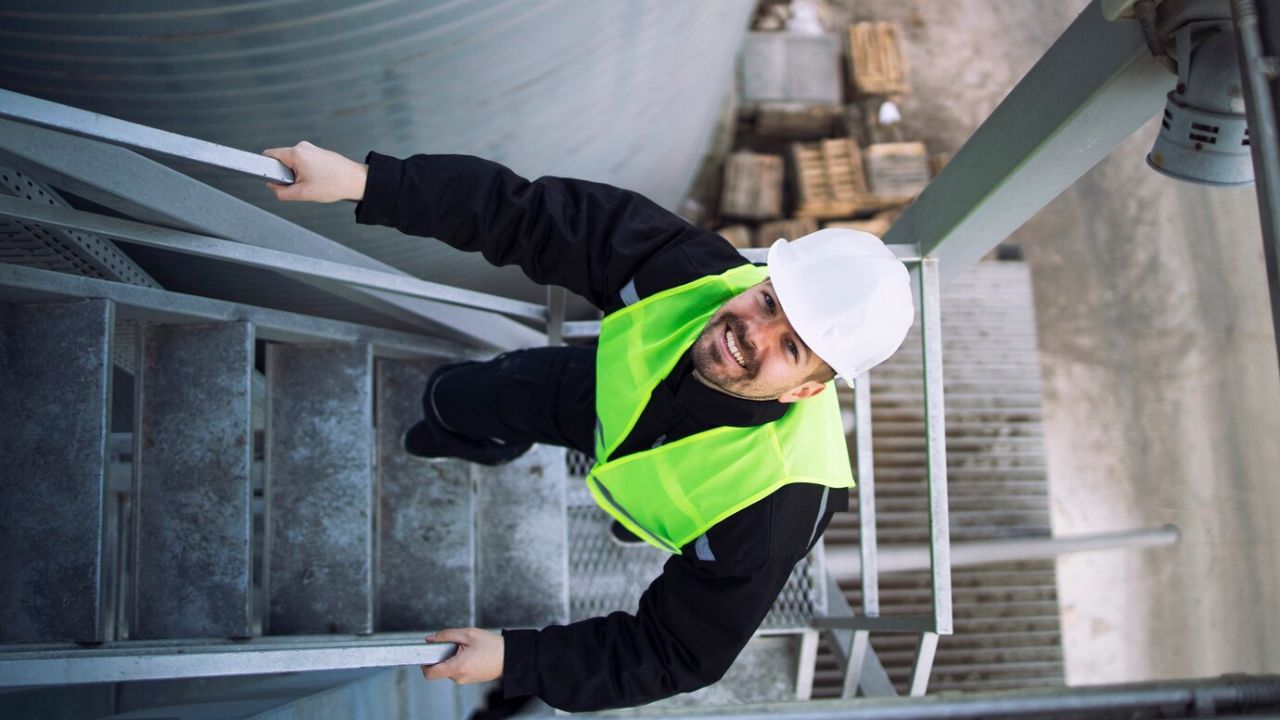Ladders are essential tools in many industries, from construction and maintenance to warehousing and manufacturing. However, they can also pose significant risks when misused or without proper fall protection systems in place. According to OSHA, falls remain one of the leading causes of workplace injuries and fatalities, many of which involve ladders.
Ladder-related incidents are preventable with proper training, equipment, and safety strategies. Below, we’ll explore nine practical ways to improve ladder safety, addressing the unique needs of both portable and fixed ladders, and helping employers and workers create a safer work environment.
1.Choose the Right Ladder for the Job
Not all ladders are created equal. Selecting the appropriate ladder type, portable or fixed, based on the task at hand is critical for safety. Portable ladders, such as step ladders and extension ladders, are ideal for temporary use and can be easily moved to different locations. Fixed ladders, often found on buildings or industrial equipment, are permanent structures designed for repeated access to specific areas.
For tasks requiring extended heights or frequent use, a fixed ladder may be better suited, especially when combined with a ladder safety system. Portable ladders should be chosen based on factors such as height, weight capacity, and the surface where they will be placed. Selecting ladders with built-in safety features, such as slip-resistant rungs or stabilizing bars, can provide an extra layer of protection.
2.Conduct Regular Inspections
Both portable and fixed ladders require regular inspections to ensure they remain safe for use. Portable ladders should be checked for cracks, bent rungs, and loose hardware before every use. For fixed ladders, inspections should focus on structural integrity, corrosion, and the condition of any safety systems, such as cages or rails.
Employers should implement a checklist for ladder inspections and assign responsibility to a safety team. Inspections should include checking the ladder’s feet, rungs, and locking mechanisms for portable ladders, while fixed ladders should be assessed for their attachment points and surrounding infrastructure. Proactive maintenance helps prevent accidents caused by overlooked damage or defects.
3. Train Workers on Proper Ladder Use
Training workers to use ladders safely is one of the most effective ways to prevent accidents. Training should cover the differences between portable and fixed ladders, safe setup practices, and proper climbing techniques. For portable ladders, training should emphasize ensuring the ladder is stable before use, while fixed ladder training should include the use of any integrated safety systems.
Incorporating hands-on demonstrations into training sessions allows workers to practice setting up and climbing ladders in supervised conditions. Regular refresher courses further reinforce safe practices and ensure workers remain up-to-date on ladder safety protocols.
5. Secure Ladders Properly
Unstable or improperly secured ladders are a common cause of workplace injuries. Portable ladders should always be placed on a flat, stable surface and secured to prevent movement. Fixed ladders, on the other hand, are inherently more stable but may require additional safety measures, such as ladder safety systems, to ensure worker safety.
While portable ladders are not typically tied off, other stabilization tools like ladder mats or stabilizers can help prevent tipping. Ensuring proper positioning and stability before use reduces the risk of accidents for both ladder types.
6. Observe the Three-Point Rule
The “three-point rule” is a simple yet effective guideline for ladder safety: Always maintain three points of contact with the ladder (two hands and one foot, or two feet and one hand). This rule applies to both portable and fixed ladders and is critical for maintaining balance and stability.
Workers should always face the ladder when climbing or descending, regardless of type, and avoid carrying tools in their hands. Tool belts or hoisting mechanisms can help workers transport equipment safely without compromising their grip on the ladder.
7. Avoid Overreaching
Overreaching is a leading cause of ladder-related falls, especially with portable ladders. Workers should position portable ladders as close as possible to the work area and keep their belt buckle within the ladder’s rails. For fixed ladders, the use of attached safety systems can reduce the likelihood of a fall caused by overreaching.
Encouraging workers to reposition portable ladders as needed rather than stretching too far helps prevent accidents. During training, emphasize that taking extra time to move a ladder is far safer than risking a fall due to overreaching.
8. Use Proper Personal Protective Equipment
Personal protective equipment (PPE) is an essential component of ladder safety, particularly for tasks involving significant heights. Workers using fixed ladders in industrial or construction environments should wear properly fitted harnesses that integrate with the ladder’s fall protection system. Portable ladder users should focus on wearing non-slip footwear and helmets to protect against slips and falling objects.
High-quality PPE tailored to the specific ladder type and task at hand reinforces overall safety and reduces the risk of injuries.
9.Limit Ladder Use During Adverse Conditions
Weather and environmental factors can impact ladder safety. For portable ladders, wet or icy surfaces can increase the risk of slipping, while high winds can cause instability. Fixed ladders, though more stable, may also become hazardous in extreme conditions if their surfaces or surroundings are compromised.
Whenever possible, schedule ladder work during favorable conditions. If tasks must be completed in adverse environments, additional precautions, such as using anti-slip accessories or enhancing visibility with proper lighting, are necessary. Supervisors should monitor workers closely and enforce strict adherence to safety protocols in such situations.
10. Implement Fall Protection Systems
Fixed ladders often include integrated fall protection systems, such as cages, rails, or harness attachment points, significantly reducing fall risks. While these systems are less common with portable ladders, ensuring their proper use on fixed ladders is critical for worker safety.
Employers should ensure that all roofing fall protection solutions are installed correctly, regularly inspected, and used in compliance with safety guidelines. This not only enhances safety but also demonstrates a commitment to employee well-being and regulatory compliance.
If adverse conditions are unavoidable, implementing additional safety measures, such as cable-safe climb systems or ladder stanchion anchors with SRLs, is crucial. Supervisors should also closely monitor workers in these conditions, ensuring they follow all safety protocols.
Creating a Safer Workplace
Ladder safety requires a collaborative effort between employers and workers. Employers must provide proper equipment, training, and maintenance programs, while workers must remain vigilant and adhere to safety protocols tailored to both portable and fixed ladder use.
By following these nine strategies, companies can significantly reduce the risks associated with ladder-related tasks, creating a safer and more productive workplace for everyone.







































